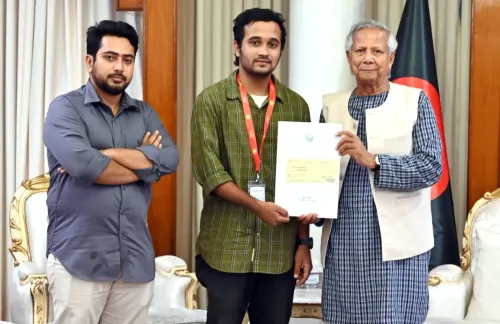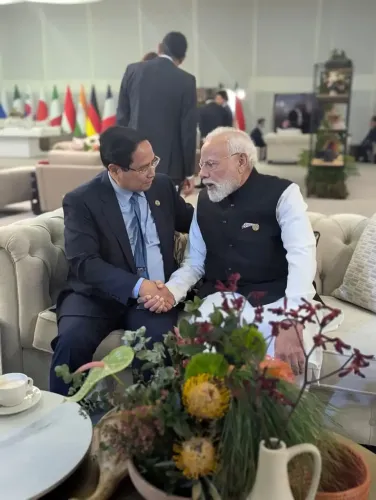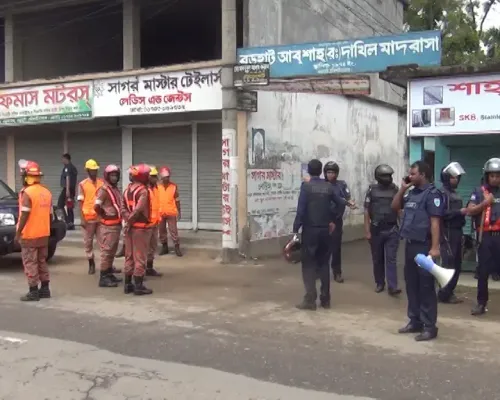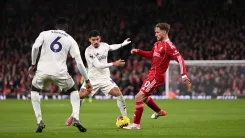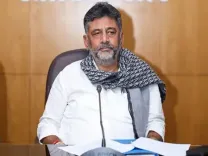Why Did European Leaders Gather at the White House to Support Ukraine Ahead of the Trump Meeting?
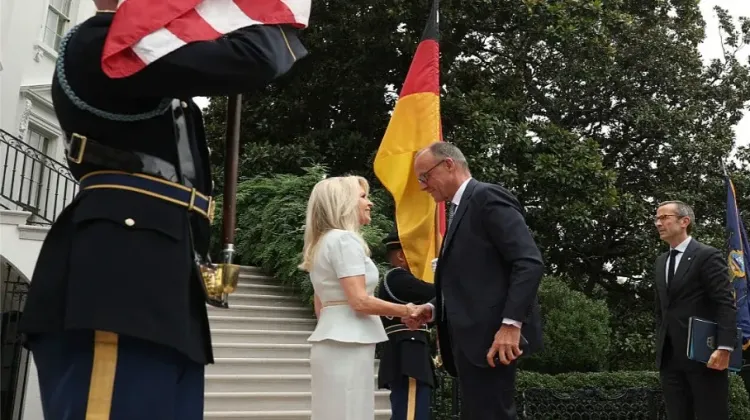
Synopsis
Key Takeaways
- European leaders showed solidarity with Ukraine at the White House.
- Concerns exist regarding pressure on Zelensky from Trump.
- Zelensky aims for lasting peace for Ukraine and Europe.
- Conflict since 2022 has resulted in severe casualties and devastation.
- Trump suggests compromises may be necessary for resolution.
Washington, Aug 19 (NationPress) European leaders converged at the White House on Monday to express their solidarity with Ukrainian President Volodymyr Zelensky prior to his meeting with US President Donald Trump. This meeting holds significant implications as Trump may face pressures to conclude the ongoing war with Russia under terms that might favor Moscow.
The representatives from Britain, Germany, France, Italy, Finland, the European Union, and NATO came to Washington to advocate for robust security assurances in any future post-war arrangements.
NATO Secretary General Mark Rutte was the first to arrive at the White House, followed by European Commission President Ursula von der Leyen and British Prime Minister Keir Starmer, all of whom were welcomed by Chief of Protocol Monica Crowley.
Trump has been advocating for a swift resolution to what is considered Europe’s most devastating conflict in nearly a century, raising concerns among Kyiv and its allies that he might pressure Ukraine into conceding to Russian demands, especially after warmly receiving Vladimir Putin in Alaska last Friday.
Zelensky is scheduled to meet Trump at 1:15 p.m. EDT in the Oval Office, where he faced sharp criticism during a previous visit in February.
Following their discussions, the European leaders are expected to convene with Trump in the White House's East Room at 3 p.m. EDT (1900 GMT), as indicated by White House officials.
This unprecedented high-level assembly at the White House, arranged on short notice, underscores the gravity of the situation.
Outside, numerous Ukrainian supporters gathered, waving their flags and displaying signs advocating for Ukraine while denouncing Putin’s aggression. One sign boldly warned: “DO NOT TRUST RUSSIA! STOP PUTIN!”
Another read: “WHAT IF FRANCE PULLED BACK AID FROM AMERICA? WOULD WE BE CELEBRATING 4TH OF JULY?”
Zelensky emphasized that the objective of his meeting with Trump is to secure a “reliable and lasting peace” for Ukraine and Europe as a whole.
He expressed on X that the US, Europe, and others must exert pressure on President Putin, as he noted that no one should expect voluntary withdrawal from aggression or ambitions of conquest.
He added that he and his European allies have aligned their positions in anticipation of the meeting with Trump.
Following overnight attacks by Russia, which resulted in the deaths of at least 10 individuals in Ukrainian cities, Zelensky condemned this as a “cynical” maneuver to disrupt potential negotiations.
“Russia can only be compelled into peace through strength, and President Trump possesses that strength,” Zelensky remarked on social media after an earlier meeting with the US special envoy for Ukraine, Keith Kellogg.
Trump has dismissed claims that the Alaska summit represented a victory for Putin, who remains internationally isolated following his military actions in Ukraine.
“I know exactly what I’m doing, and I don’t require advice from those who have failed to resolve these conflicts in the past,” Trump stated on social media.
His administration has indicated the necessity for compromises from both parties to resolve the conflict, but Trump has placed the onus on Zelensky, suggesting that Ukraine must abandon aspirations to reclaim Crimea, annexed by Russia in 2014, or join NATO.
“Zelensky can conclude the war with Russia almost instantaneously, should he choose to, or he can persist in fighting,” Trump asserted on social media.
Zelensky has largely dismissed the framework of Putin’s proposals from the Alaska meeting, which included surrendering the remaining quarter of the eastern Donetsk region, predominantly under Russian control. Ukrainian forces are heavily entrenched in this area, crucial for defending against Russian advances.
Any alterations to Ukraine’s territory would necessitate approval via a referendum.
Zelensky is also advocating for an immediate ceasefire to facilitate more extensive peace negotiations. While Trump previously supported this notion, he shifted his stance post-summit with Putin, favoring a comprehensive agreement amidst ongoing hostilities.
Ukraine and its allies find some solace in Trump’s apparent readiness to provide security guarantees for Ukraine post-settlement. A spokesperson for the German government indicated that European leaders would demand more clarity on this during discussions in Washington.
Since the onset of Russia's full-scale invasion in February 2022, the war has resulted in casualties exceeding one million from both sides, including a significant number of Ukrainian civilians, as reported by analysts, and has devastated large areas of the country.
On the battlefield, Russia continues to advance slowly, leveraging its numerical and firepower advantages. Putin has stated his intent to persist in combat until his military goals are met.

